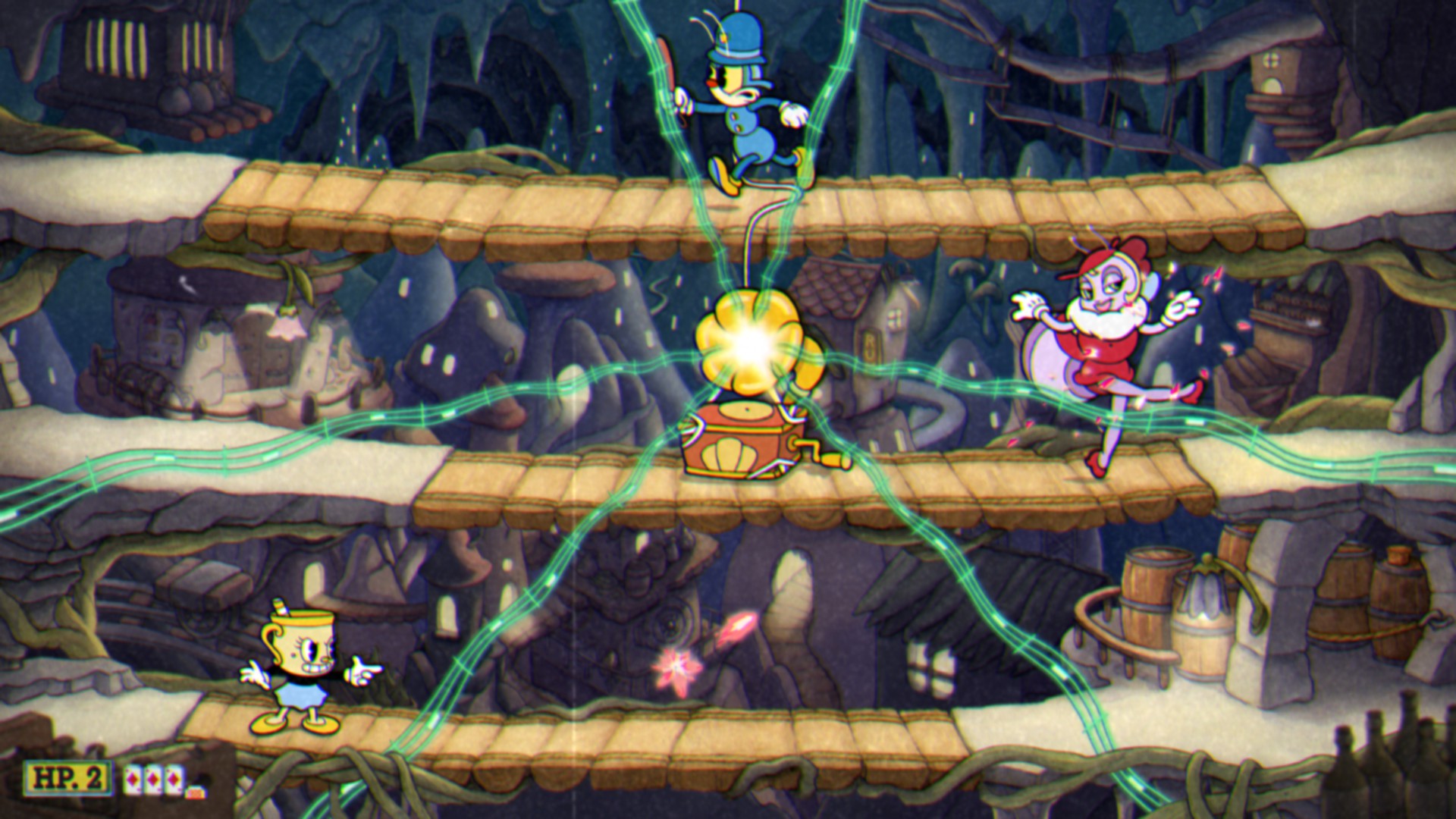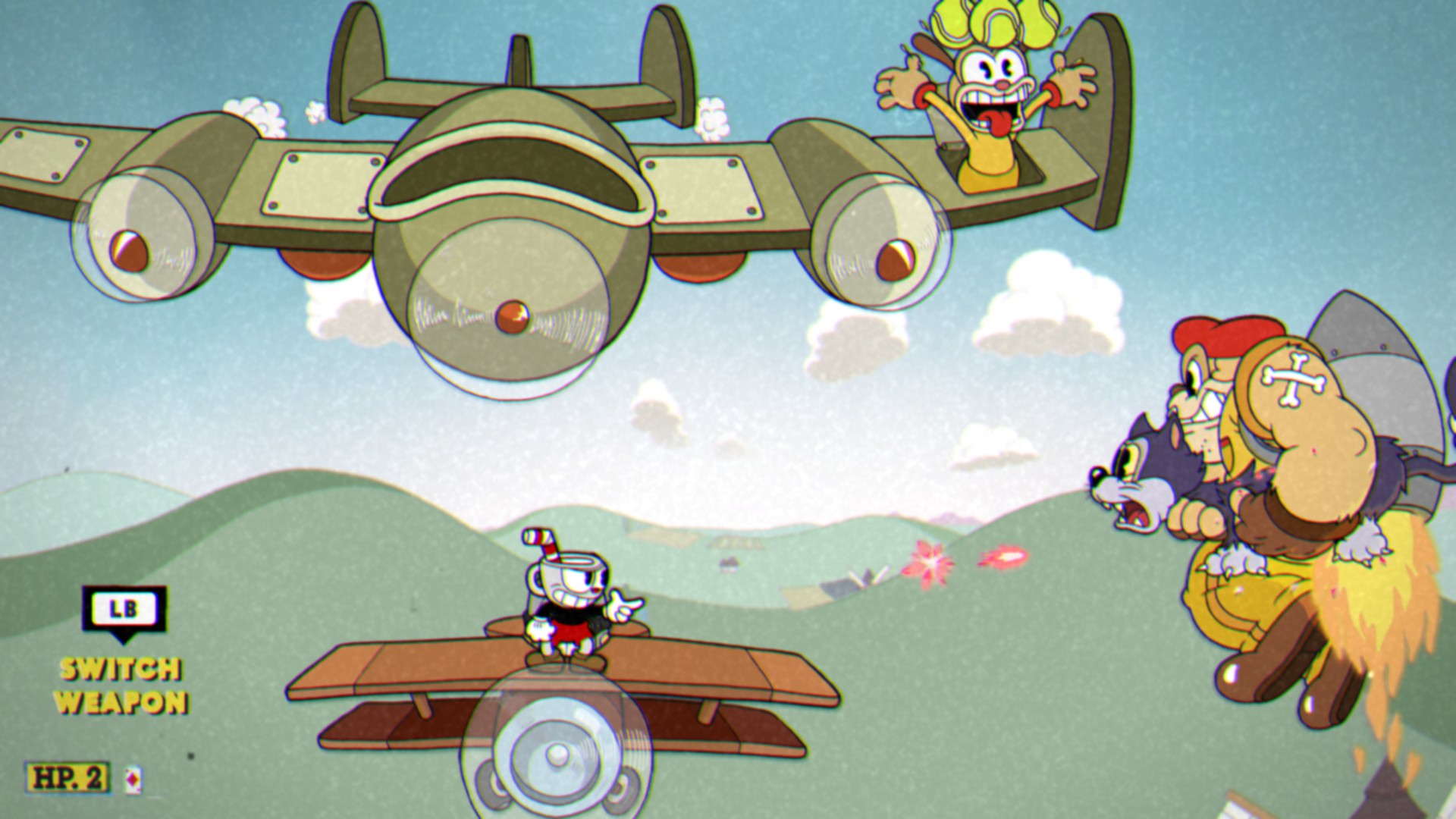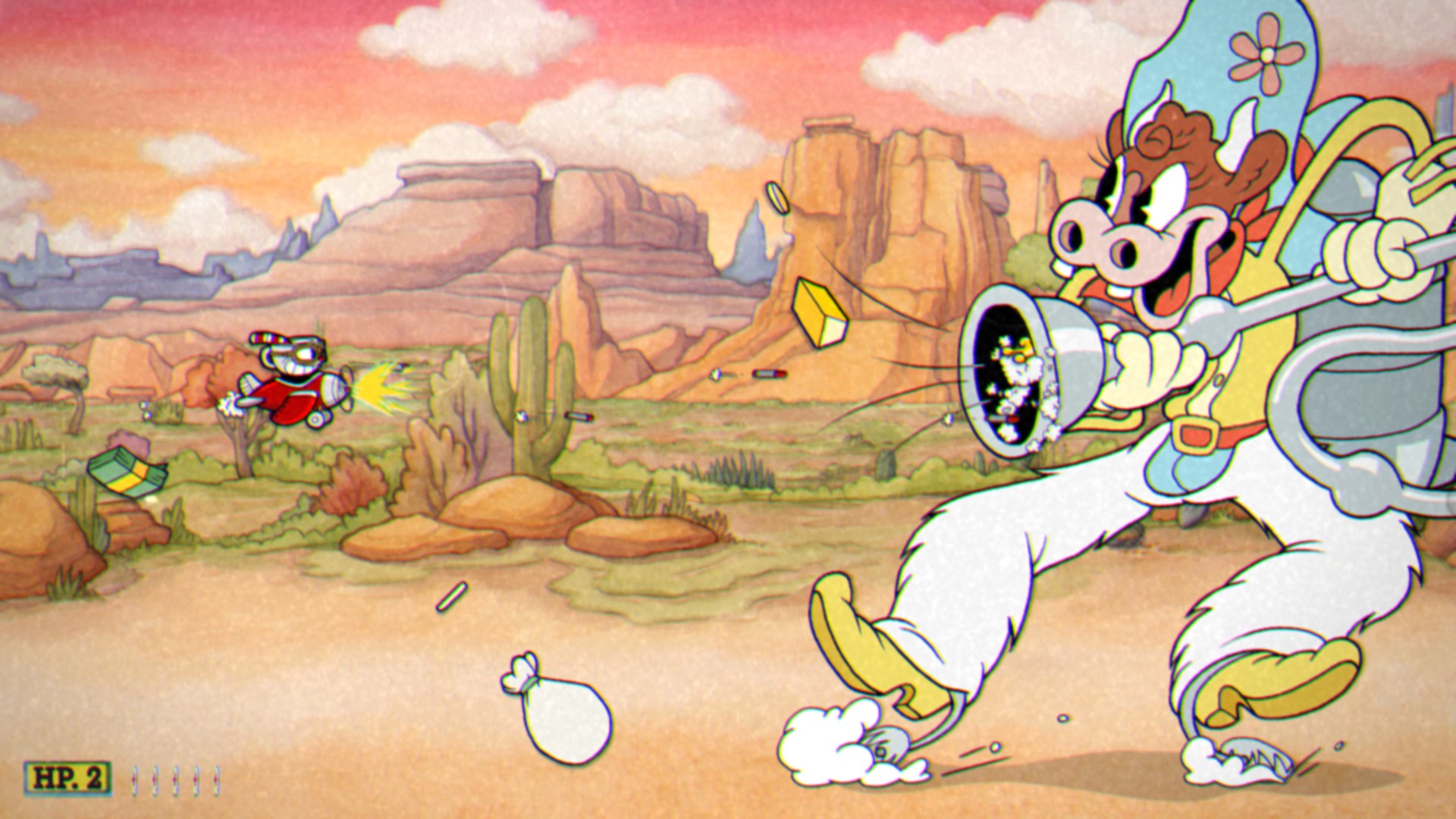Need to know
What is it? Add-on chapter to tough but gorgeous platform shooter Cuphead.
Expect to pay $8/£6.79
Release date June 30, 2022
Developer Studio MDHR
Publisher Studio MDHR
Reviewed on RTX 2070, i7-10750H, 16GB RAM
Multiplayer? 2-player co-op.
Link Official site (opens in new tab)
Not many games refer to themselves as delicious, but who would deny it works for Cuphead? Studio MDHR’s painstaking recreation of a 1930s Disney aesthetic oozes confectionery flavour that sends you flitting between its delicacies like an all-you-can-eat buffet. And even if this new dish of platforming goodness arrives a little cold—nearly five years after the original game’s release—it remains a succulent proposition. Just don’t forget Cuphead is similarly famous for its boss fights that rain merry hell upon you. Prepare to di(n)e.
At least you can jump right into this DLC even from a fresh save without completing the main meal. Reach and finish the first mausoleum challenge that becomes accessible only a couple of stages in and you release the star of this episode, Ms. Chalice. From there, a clock-faced boatman will row you to the new fourth isle, where your task is to return the ghostly Chalice to corporeal form. To do that, all you need is, well, a Wondertart, at least according to jolly local chef Saltbaker. He’s only too pleased to make it providing you can gather five special ingredients. But wouldn’t you know it these particular groceries are protected by burly bosses, and you’ll have to defeat them first.

Before you set about trying to crack these tough nuts, though, MDHR adds a little extra spice to the mixture. You can play these new levels (and the old ones) not only as Cuphead or Mugman, but Chalice herself. Equip a magic cookie in your bowl-bonced hero’s charm slot, and Chalice ‘borrows’ their body. Unfortunately, that means you can’t then use one of the game’s helpful trinkets (not least the crutch of the invincible dash), but that’s more than made up for by Chalice’s distinct set of skills.
The big changes are her ability to double jump and parry pink projectiles simply by dashing into them, plus she has a fourth hit point by default—a major concession for a game that seldom broke its three-strikes-and-out rule in the past. With that, it’s no surprise that playing as Chalice can make progress slightly easier, although you may still be better served using your preferred ceramic brother for certain fights. Certainly if you want to employ any of the game’s new charms—including a handy ring that adds a hint point on your first, third and sixth parries in a stage—you’ll need one of the boys.
Bossing it
As for the battles, they really feel like they’ve benefitted from their time in the slow cooker, as The Last Course brings even more colour and richness to Cuphead’s signature character design, animation and irrepressible soundtrack. This fresh plate isn’t merely tasty and immaculately presented—under the cloche lies a greater sense of theatre. New antagonists have more bounce in their step, greater comic exaggeration in their faces, and some spectacular moments of escalation in their final phases.
The machinery beneath this extravagance, meanwhile, holds firm to well-greased cycles, with quick restarts smoothing the bumpy ride of fail, learn, fail better. As ever, it demands you tap into a time trial mentality, where every bout feels like a lap of a racing circuit that can be driven ever more clinically as you test the limits of every bend. Of course, the bends here come in the form of missiles, minions, dangling obstacles and the rolling, dancing bodies of your opponents, but mastering a skilled response to every tell is a similar principle.

Then again, if Cuphead were a racing game, it would be the kind that featured oncoming traffic to throw you off your racing line, and screens are often even busier this time, with attack patterns criss-crossing at inopportune moments, forcing you to head pat and tummy rub to escape another fine mess. The first boss I tried, Bootlegger Boogie, is an ideal scene setter in that respect, staged on three vertical layers that link three otherwise disparate opponents. All demand nimble hopping up and down, but force you to navigate the space in very different ways. It’s a lot to take in, with safe areas a premium, and infuriating failures almost guaranteed. Yet once you start to improv alongside its upbeat jazz rhythm, it’s an absolute hoot.
New antagonists have more bounce in their step, greater comic exaggeration in their faces, and some spectacular moments of escalation.
Between the main events, there’s also entertaining respite in a series of side tests that mercifully replace the original’s run and gun levels. Climb up a mysterious rope ladder and you’ll find yourself on King’s Leap, a castle in the clouds where the monarch tasks you with besting his chess themed vassals without the use of weapons. It’s perhaps advisable to treat these moreish examinations of your dodging and parrying skills as palette cleansers between bigger challenges, if you can resist the temptation to binge as soon as you can.
Food for thought
Indeed, the only real weak link in the package is the final boss that appears after you’ve fetched your ingredients (I’ve been asked not to divulge their identity). It simply doesn’t trump what’s gone before and demonstrates the downside of chaotic encounters, as you don’t feel like you’re dealing with the boss itself so much as the many random objects flinging themselves across the screen. The big bad fades into the background for much of its showcase.

That’s not the only time the stunning visuals get rather lost in the demands of such a frantic action game, though. For instance, Esther Winchester, a cow dressed in cowboy gear—a reverse cowgirl, you might say—has a similar problem. She’s never more delightfully animated than when she’s skipping backwards on the right half of the screen, accosting you with a mammoth vacuum cleaner. But you may barely notice since that’s exactly the point you need to stay focused on the left, weaving between missiles she’s sucking towards you.
At points such as these, The Last Course isn’t entirely at one with itself, then, like a world in which Mega Man was tossed into a Silly Symphony in the hope they’d get along. Equally, it still seems strange that, as indebted as Cuphead is to those old cartoons, it’s never found a place for their character development and storytelling techniques in its scenes. While the character design is visually stronger than ever here, these bosses are really only colourful mechanical puzzles, any personality they have condensed into their desire to kill you and how they react to being shot. This felt excusable in the original game, since the cast was so large. Now it sticks out as a missed opportunity not to bookend individual encounters with more context and sketch narrative arcs through the battles themselves.
The Delicious Last Course is still top-tier Cupheading. I’d even say that two or three of its bosses would barge their way into my overall top five Cuphead stages, which equates to a pretty strong return. On an artistic level, however, there’s something underexploited in the practice of mining the history of animation in such detail, merely to line up its treasures with targets on their heads. As delicious as it may be, there’s always that hint of regret when you’re served a truly artful piece of cookery, and the only thing to do is demolish it.

